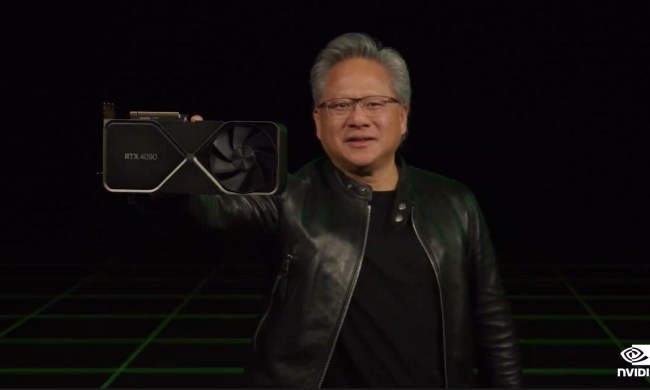If you’ve been playing PC games for a number of years, you’ve probably heard the term ‘VSync’ tossed around once or twice. Maybe you’ve also heard of G-Sync and FreeSync. For those unaware, VSync is actually short for ‘vertical synchronization’. This is a display feature that is designed to keep your gaming screen running in sync with your computer’s GPU. VSync isn’t just important for PC gaming, but it’s one of the most important criteria that goes into a good gaming display.
- What is VSync technology?
- Does it make a big difference?
- What do I need to enable VSync technology?
- Does VSync have any problems?
- What are Adaptive VSync and Fast Sync?
- Is VSync better than G-Sync or FreeSync?
- Who can use G-Sync and FreeSync?
- How to enable VSync?
- Is it better to have VSync turned on or off?
In this article, we’re going to take a closer look at VSync (and its related technologies) to find out exactly how it works, if you should have it enabled, and how to disable it if you don’t like the optimization.
What is VSync technology?
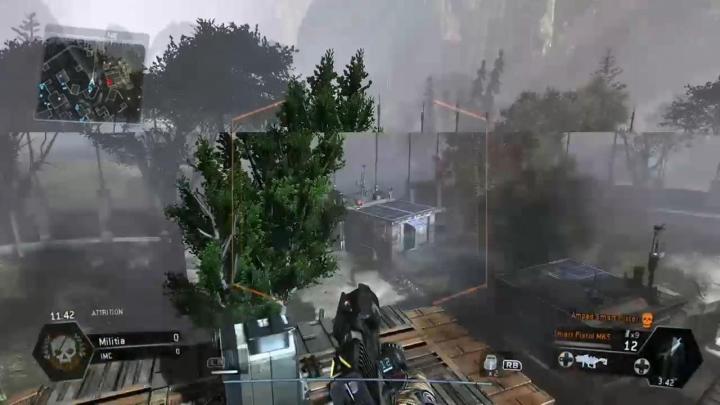
VSync is a graphics technology designed to sync a game’s frame rate with the refresh rate of a gaming monitor. Originally pioneered by GPU manufacturers, this technology was introduced to address the issue of screen tearing, which occurs when your screen simultaneously presents portions of multiple frames. This can lead to visual artifacts resembling the example shown above, typically manifesting as a horizontal split in the display. Screen tearing arises when the monitor’s refresh rate (the frequency at which it updates per second) is not synchronized with the frames per second being produced by the graphics card.
Screen tearing can occur at any time, though it is most prevalent during fast motion, particularly when a game runs at a higher frame rate than the monitor can handle or when the frame rate changes dramatically and the monitor can’t keep up. It is particularly noticeable during fast-paced games with vertical image elements, such as trees, entrances, or buildings. When this happens, those lines will quite clearly not line up correctly, which can break immersion and make a beautiful game look rather ugly.
VSync does a few things to help alleviate this. First, it limits the frame rate output by the graphics card to the monitor’s refresh rate (60Hz, unless you have a high-refresh-rate monitor), making it easier to avoid higher frames per second than the monitor can handle.
It does this by preventing the GPU from doing anything to the display memory until the monitor has concluded its current refresh cycle — effectively not feeding it any more information until it’s ready for it. Through a combination of double buffering and page flipping, VSync synchronizes the drawing of frames onto the display only when it has finished a refresh cycle, so you shouldn’t ever see tears when VSync is enabled.
Does it make a big difference?
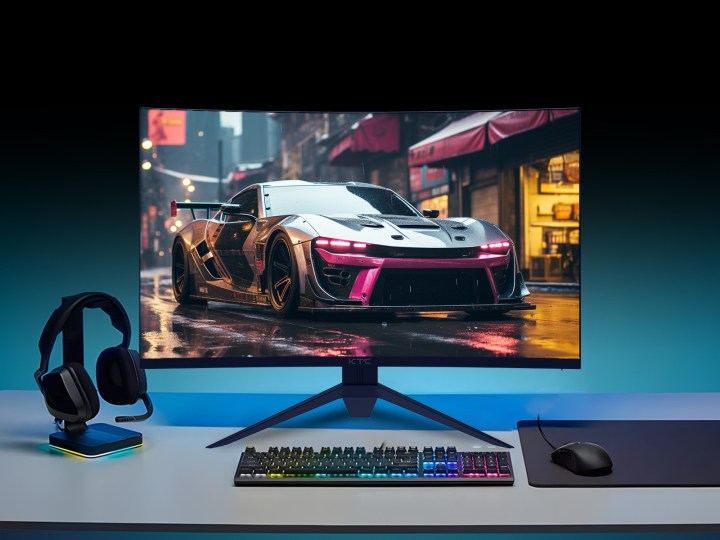
VSync only helps with screen tearing, and it only really does that by limiting fps when necessary. If your monitor can’t keep up with the fps of a particular game, then VSync can make a big difference.
However, VSync cannot improve your resolution, colors, or brightness levels like HDR. It’s a preventative technology that’s focused on stopping a specific problem rather than making improvements. It also tends to harm performance.
By forcing frames to be entirely rendered before being displayed, your fps can suffer, and at best, your frame rate is limited to the refresh rate of your display. In some games where higher fps can lead to reduced input lag, it can also affect your competitive performance.
If you really want to make the most of your PC’s gaming capabilities, it’s important to fine-tune your settings to the max. Check out our guide on the best Nvidia Control Panel settings, and if you’re into Call of Duty, we have a game-specific guide for Call of Duty: Modern Warfare III that can help you push your computer to the limit.
What do I need to enable VSync technology?
You don’t need a particular monitor to use VSync — it’s designed to work with all kinds of displays. You need a graphics card that supports it, but most recent generations support it throughout the product lineups. VSync has been around for many years, and both Nvidia and AMD have options to enable the setting in their drivers for all games.
However, if you’d prefer to do it on an individual game basis, most games offer it as a toggle option in their graphics settings menu.
Does VSync have any problems?
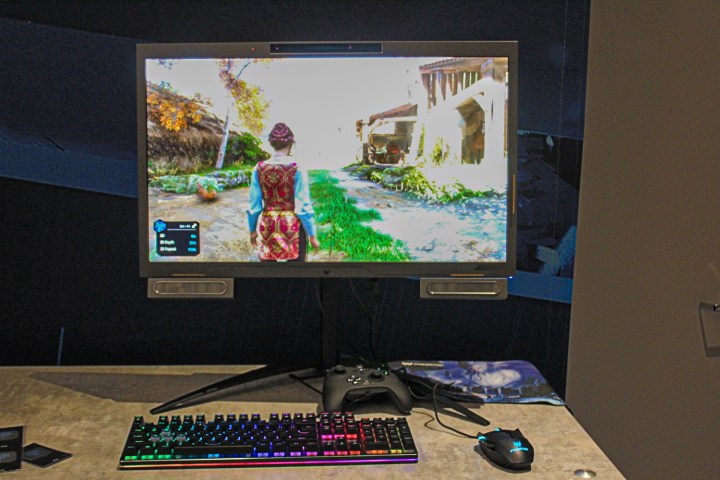
VSync is far from a perfect solution and can negatively affect your gaming experience, even if it is useful and working as intended. If a monitor and a game are having trouble syncing up, then VSync can lower your frame rate significantly to try to find a point where they can. That can lead to input lag and stuttering increases, which worsens the gaming experience. Screen tearing is most noticeable in fast-paced games like shooters and fighters, but it can affect all sorts of games regardless of genre.
That’s why, if you’re particularly serious about these types of games, enabling VSync might not be worth it. Another setting, called triple buffering, can help reduce some of VSync’s problems, but this doesn’t come with any guarantees.
What are Adaptive VSync and Fast Sync?
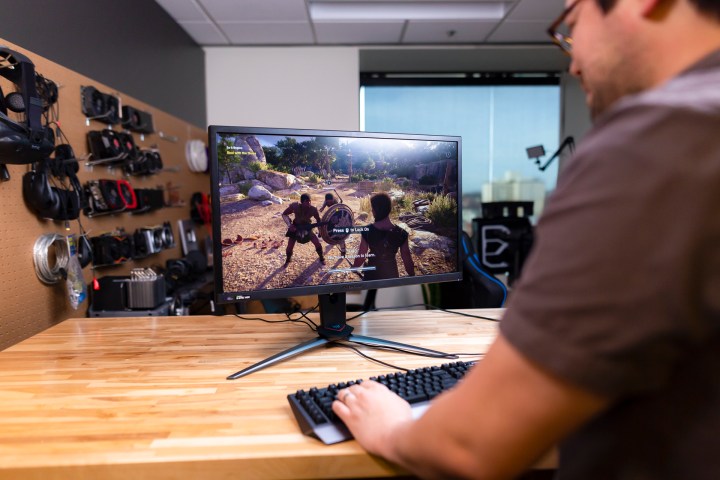
Here’s where things get a little more complicated. GPU companies were well aware of VSync’s potential problems when it was first released, and they’ve been trying to make improved versions ever since. That’s why, when you go into your GPU control panel, you may see different syncing options. More advanced forms of VSync include:
- Adaptive VSync: This is an Nvidia improvement that watches the monitor’s max refresh rate. If the FPS of the game is equal to or higher than the refresh, VSync is enabled. If the FPS falls below, it’s disabled, thus preventing some input lag issues from arising.
- Fast Sync: Fast Sync is a more advanced form of Adaptive VSync from Nvidia that enables VSync when necessary and adds in automatic triple buffering to pick the best frame data possible. It takes a lot of power to use but helps fix a lot of VSync issues as well.
- Enhanced Sync: Enhanced Sync is AMD’s version of Fast Sync. It disables VSync when the frame rate drops below a monitor’s refresh rate to prevent related problems.
Is VSync better than G-Sync or FreeSync?

Nvidia’s G-Sync and AMD’s FreeSync aim to improve on VSync abilities. Both GPU technologies work to sync refresh rates and data with your GPU’s frame rate. The companies wanted to end problems with VSync, particularly image precision and uniformity, and tears. Essentially, G-Sync and FreeSync are more effective versions of the VSync software. If they are available to you, we suggest trying them out.
However, these technologies are compatible with your graphics card and monitor. Most monitors have G-Sync or FreeSync, but there’s minimal support. Since they are competing software, you’ll have difficulty finding a monitor that uses both. In the end, you will likely have to attempt to match your monitor’s capabilities to your GPUs. As long as you understand both units’ technical specs before purchasing, this is relatively easy to accomplish.
Who can use G-Sync and FreeSync?
Most, if not all, modern Nvidia and AMD graphics cards offer access to either G-Sync or FreeSync. VSync, on the other hand, should be available to pretty much everyone — if your PC can handle games, it can support VSync.
Nvidia users will need at least a GTX 650 Ti Boost GPU for basic G-sync compatibility and a GTX 1050 or higher for G-Sync HDR. This means that if you own one of the best graphics cards, such as an Nvidia GeForce RTX 4070 Super, you will definitely have access to G-Sync. However, keep in mind that your monitor matters too, as only some monitors support G-Sync. G-Sync is available on Windows 7, Windows 8.1, Windows 10, and Windows 11.
AMD FreeSync is also fairly accessible. Not only can it be used by AMD GPU owners, but some Nvidia GPUs support it too. In order to run AMD FreeSync on a Radeon graphics card, you will need at least an AMD Radeon RX 200 series GPU. FreeSync is also available on compatible desktop AMD Ryzen APUs.
How to enable VSync?
If you have a graphics card that supports VSync, you can easily enable it to ensure smooth performance on most displays. VSync can be activated either through the AMD FreeSync (AMF) technology or Nvidia graphics drivers. Alternatively, you can toggle the VSync setting within the graphics options of your game.
To guide you through the process, here’s a simple step-by-step guide for enabling VSync using the Nvidia Control Panel on your PC:
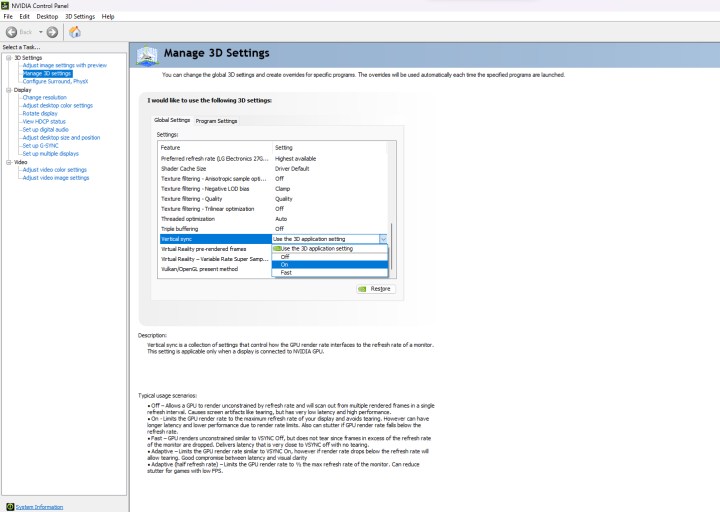
- Begin by selecting the Start button and typing Nvidia Control Panel into the search bar. Select Enter to launch the Nvidia Control Panel.
- Once the Nvidia Control Panel is open, you’ll find the option to manage 3D settings on the left-hand side of the control panel.
- Select the Vertical Sync option, which is located under the Global Settings tab.
- If it’s not already enabled, simply select On from the drop-down menu to activate VSync. You can also let a 3D application, like games, decide whether it wants to enable the feature or not.
Is it better to have VSync turned on or off?
That all depends on the type of gaming experience you’re having. If you notice a lot of frame tearing, or any other indication that your gameplay isn’t able to keep up with your monitor’s native refresh rate, then it’s probably a good idea to have VSync enabled. Generally speaking, VSync is such old frame optimization tech at this point, you’ll find it built into most hardware by default.
The only time you may want to disable the feature is if you notice an abnormal amount of frame drop. Heavy input lag could be another situation where you may want to try shutting VSync down.



